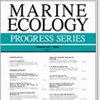Exploring intertidal sea anemones Actinia equina as natural eDNA samplers for coastal biodiversity assessment
IF 2.1
3区 环境科学与生态学
Q2 ECOLOGY
引用次数: 0
Abstract
ABSTRACT: Biodiversity in coastal marine environments is under unprecedented threat from anthropogenic impacts, which highlights a need for cost-effective and expedient survey methods. The analysis of environmental DNA (eDNA)—typically obtained through artificially filtered water samples—can paint a detailed picture of fish diversity in marine coastal environments. More recently, the analysis of natural sampler DNA (nsDNA, based on filter-feeding invertebrates that naturally trap eDNA in their tissues) has emerged as a potential alternative to water filtering. In this study, we investigate the widely distributed beadlet anemone Actinia equina as a potential natural eDNA sampler. Anemone samples were collected from 2 coastal locations in the UK: Rhosneigr (Anglesey, North Wales) and New Brighton (Wirral, north-western England). Sampling took place over 2 different months, and samples were compared to concomitantly sampled water. DNA metabarcoding via 12S Tele02 fish-specific primers revealed successful detection of a range of fish and other vertebrate species. We observed differences in species detected between conventional eDNA and sea anemone nsDNA samples, as well as a significant difference in seasonality detected through nsDNA. Our results indicate that the beadlet anemone can be a successful natural eDNA sampler, but that its value is more likely to reside in its complementarity alongside established eDNA methods.探索将潮间带海葵马尾藻作为天然 eDNA 采样器用于沿海生物多样性评估
摘要:沿岸海洋环境中的生物多样性正受到人类活动带来的前所未有的威胁,这就凸显了对具有成本效益的快速调查方法的需求。分析环境 DNA(eDNA)--通常通过人工过滤水样获得--可以详细描述海洋沿岸环境中鱼类的多样性。最近,天然采样 DNA(nsDNA,基于滤食性无脊椎动物,其组织中天然捕获 eDNA)分析成为水过滤的潜在替代方法。在本研究中,我们研究了广泛分布的珠孔海葵(Actinia equina),将其作为一种潜在的天然 eDNA 采样器。海葵样本采集自英国的两个沿海地区:Rhosneigr(北威尔士安格尔西)和 New Brighton(英格兰西北部威勒尔)。采样工作在两个不同的月份进行,并将样本与同时采样的水进行比较。通过 12S Tele02 鱼类特异性引物进行 DNA 代谢编码,成功检测到一系列鱼类和其他脊椎动物物种。我们观察到传统 eDNA 样品和海葵 nsDNA 样品检测到的物种存在差异,通过 nsDNA 检测到的季节性也存在显著差异。我们的研究结果表明,小珠海葵可以成为一种成功的天然 eDNA 采样器,但其价值更可能在于它与现有 eDNA 方法的互补性。
本文章由计算机程序翻译,如有差异,请以英文原文为准。
求助全文
约1分钟内获得全文
求助全文
来源期刊

Marine Ecology Progress Series
环境科学-海洋学
CiteScore
5.30
自引率
8.00%
发文量
238
审稿时长
3 months
期刊介绍:
The leading journal in its field, MEPS covers all aspects of marine ecology, fundamental and applied. Topics covered include microbiology, botany, zoology, ecosystem research, biological oceanography, ecological aspects of fisheries and aquaculture, pollution, environmental protection, conservation, and resource management.
 求助内容:
求助内容: 应助结果提醒方式:
应助结果提醒方式:


